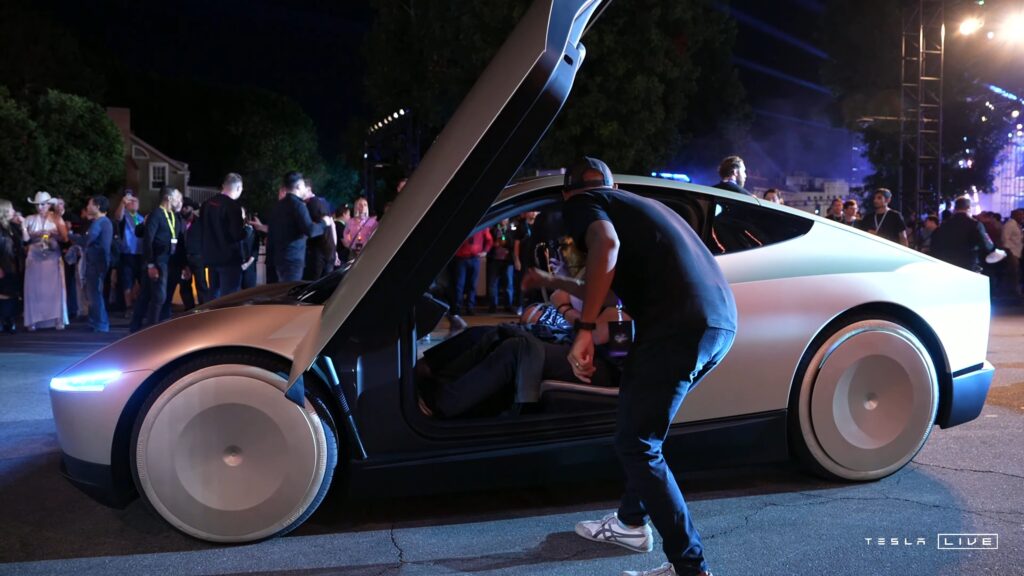- Tesla’s Cybercab promises to revolutionize transportation, but legal and safety challenges present major roadblocks.
- Current NHTSA exemptions cap deployment at 2,500 vehicles per year for models lacking human controls.
- Regulatory approval for Tesla’s steering-wheel-free Cybercab will limit production, making mass adoption difficult without changes.
When unveiling the Tesla Cybercab late last week, Elon Musk promised that it would be produced in “very high” numbers. Bold words, but there are still plenty of pesky regulatory hurdles for Tesla to clear before this fully autonomous vehicle even sniffs a production line—let alone starts rolling out in serious volume.
Like Tesla’s other models, the Cybercab relies on the company’s vision-only autonomous driving tech, but with a twist: no steering wheel, no pedals, no controls whatsoever. While this makes sense for a vehicle that can drive itself 100% of the time without any human intervention, actually getting approval to roll out such a vehicle onto public roads isn’t easy.
Read: Tesla Cybercab Is A $30,000 Robotaxi Without A Steering Wheel Or Pedals
For any automaker looking to launch a vehicle without standard driving controls must be granted permission from the National Highway Traffic Safety Administration (NHTSA) to do so. GM attempted to get an exemption to roll out a robotaxi without normal controls back in 2022 but, after two years, abandoned the request after it went unanswered.
If Tesla does manage to get the NHTSA’s approval to introduce the Cybercab, current regulations would only permit it to deploy 2,500 vehicles per year without a steering wheel and pedals, Bloomberg reports. That would not be enough to achieve Musk’s aim of operating a huge fleet of robotaxis across the United States. According to University of South Carolina law professor and autonomous vehicle expert, Bryant Walker, “exemptions aren’t a viable route for a mass manufacturer,” unless “Congress increases this limit.”

Musk insists Tesla will start building the Cybercab before 2027, though they haven’t even filed for the necessary NHTSA exemption yet. Maybe they’re holding off for dramatic effect, or maybe it’s just business as usual at Tesla, where deadlines seem more like suggestions.
On top of all this, Tesla has state-level regulations to contend with. Tesla doesn’t have a driverless testing or deployment permit in California and is likely years away from obtaining one. It will also need to provide the state with comprehensive testing data. It might be a bit easier to get the Cybercab on the road in states like Texas, but even there, Tesla faces the uphill battle of proving that this tech is ready for prime time.












